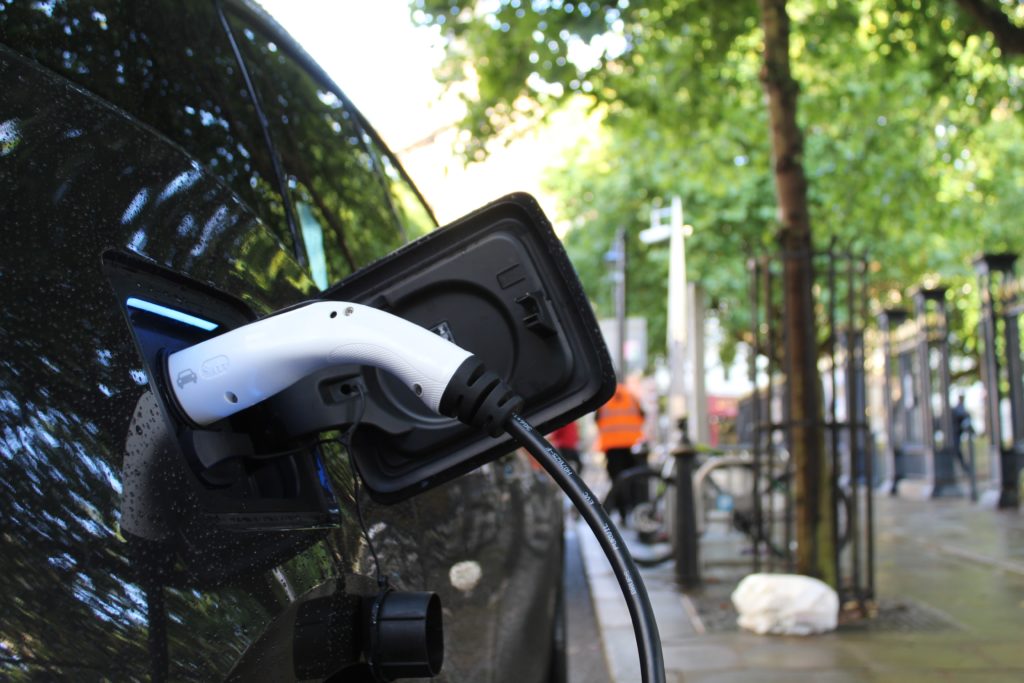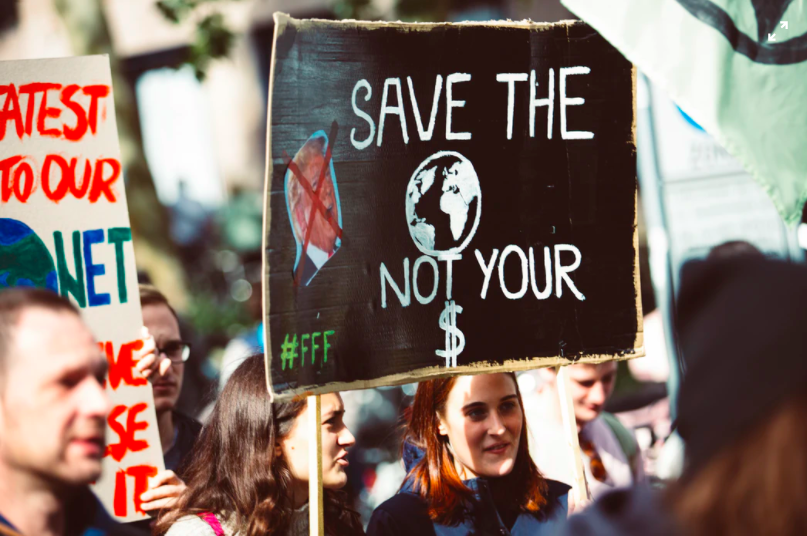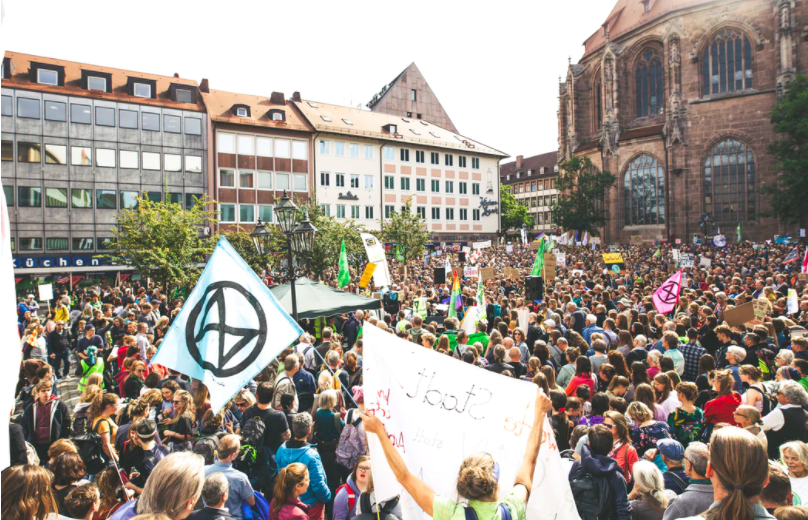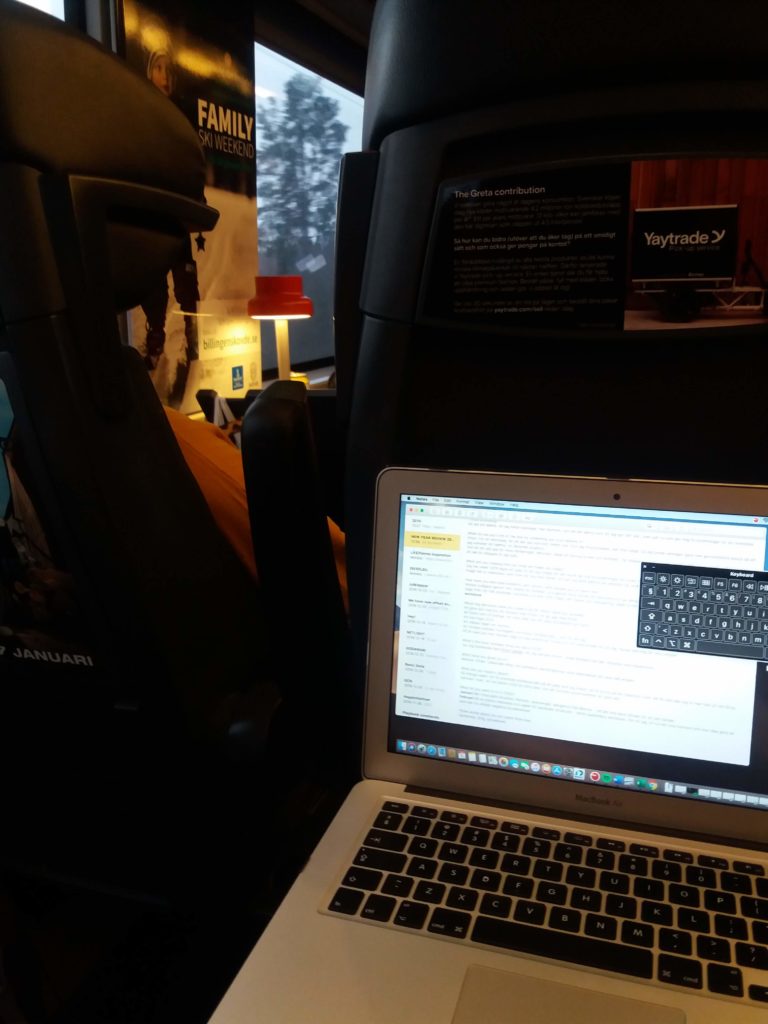We at GoClimate are striving to help people understand their carbon footprint. This is step one in our series of making it easy to grasp what your own emissions stem from and how to handle them!
A lot of the things we do emit carbon dioxide (and other Greenhouse Gases) into the air, directly or indirectly. Big corporations are responsible for a large share of emissions through production of fuels and different products, and governments are responsible for national policies and collective emissions. But as individuals, we are also responsible for a share in all of this through our lifestyle choices and consumption. That’s why we need to come together in order to change this, and create a better way of living that doesn’t harm the climate.

Emissions from production 
Emissions from agriculture
Global emissions – who is responsible?
Globally, we humans emit about 40 gigatonnes of CO2 into the atmosphere each year. That number is so large that It feels impossible to understand. If we break it down by country, we need to remember that some countries, like China and Saudi Arabia, have high emissions because they produce goods that are being consumed in other countries. Usually the national emissions are presented based on the production, not the consumption, of goods. Measuring the consumption is more difficult, but perhaps more important if we are interested in responsibility.
In terms of production, Sweden emits something like 42 million tonnes of CO2 per year, or 4,25 tonnes per capita (our world in data 2017). However, when we look at consumption, we are responsible for 9,87 tonnes per capita (Naturvårdsverket 2017) – more than twice as much! We use Sweden as an example here, because not all countries report data for consumption based emissions. To make sure that we take responsibility for what we can, as individuals we need to focus on the consumption-based emissions.
How should we handle this?
It would be so great if all governments came together and established (and implemented!) legislation which prevented the emissions of CO2 which destabilize our climate. But right now, they are not, and this problem is too urgent for us to accept inaction. If we all join forces, we can both reduce emissions on an individual and collective level, as well as exert pressure on governments to improve legislation. This is not an either/or situation, we need to do everything!
We at GoClimate have developed our carbon footprint calculator as a first step in understanding the carbon footprint of an individual. It is a simple calculator based on average values, which is enough to give you an overview of what you are currently doing to contribute to climate change, and focus on what the main areas are where you can reduce your emissions.
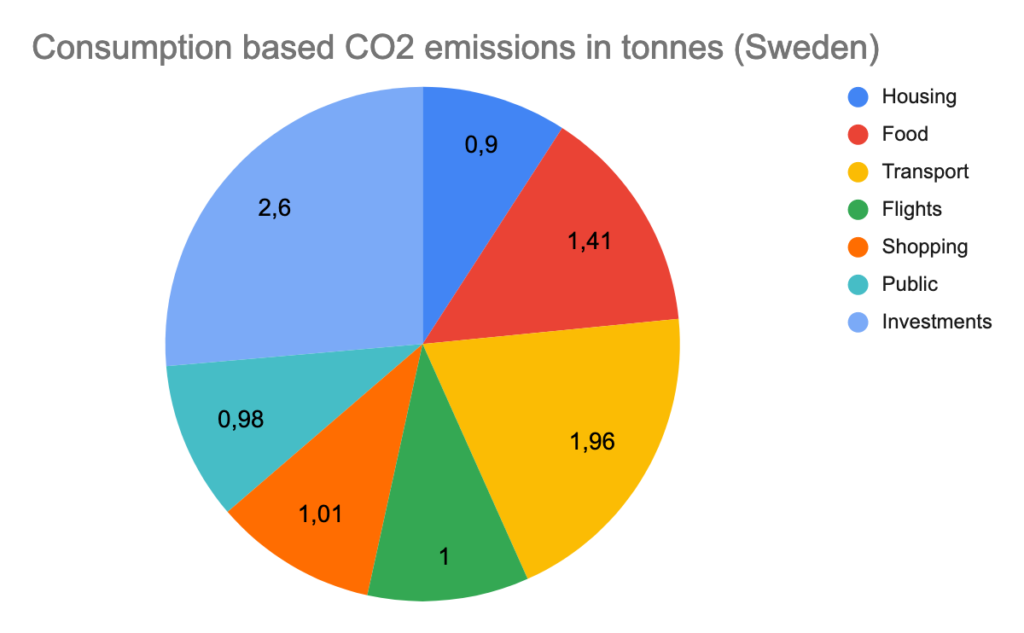
How does each person cause emissions?
As mentioned above, an average Swede emits 9,87 tonnes per year. Transport is the cause of 1,96 tonnes, adding to that international flights of 1 tonne, food is 1,41 tonnes, private consumption (“shopping”) is 1,01 tonnes and housing is 0,9 tonnes. Adding to that public consumption and investments, 0,98 and 2,6 tonnes respectively. This indicates that there is a large part that is hard to reduce on your own, and that we also need to push politicians to make the right decisions to get this under control. But the larger share is ours to handle! Empowering, right!?
Curious to know more about your carbon footprint? Read the other posts in this series:
Me and my carbon footprint
What is a “carbon footprint”?
The carbon footprint of a home
The carbon footprint of a diet
The carbon footprint of our traveling
The carbon footprint of long distance traveling
The carbon footprint of shopping
The carbon footprint of public consumption
Or go to www.goclimate.com to calculate your carbon footprint now!
